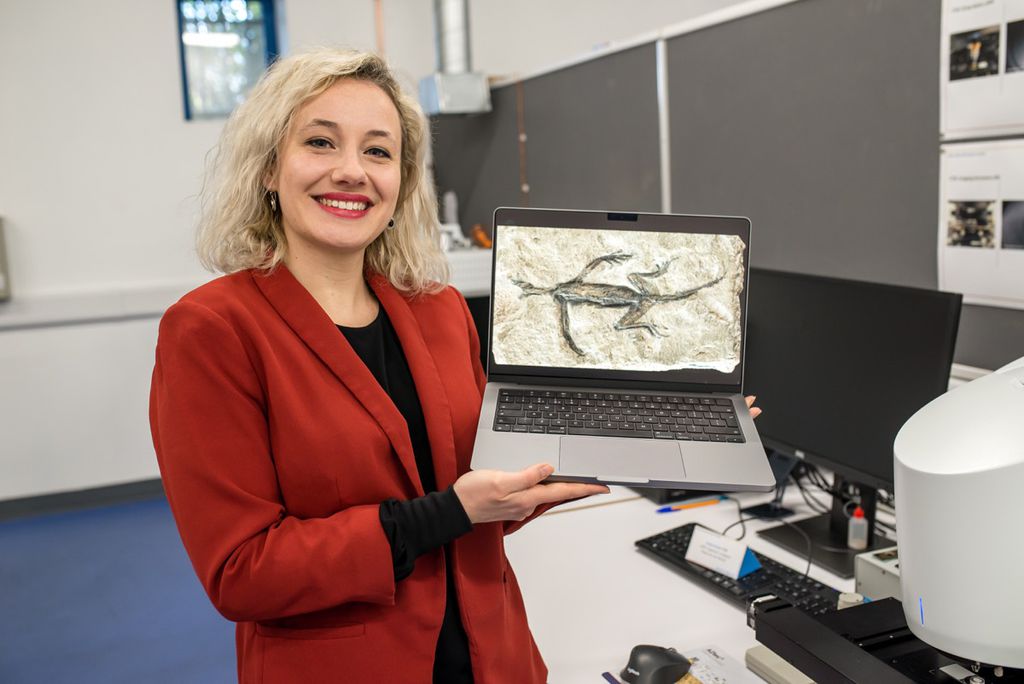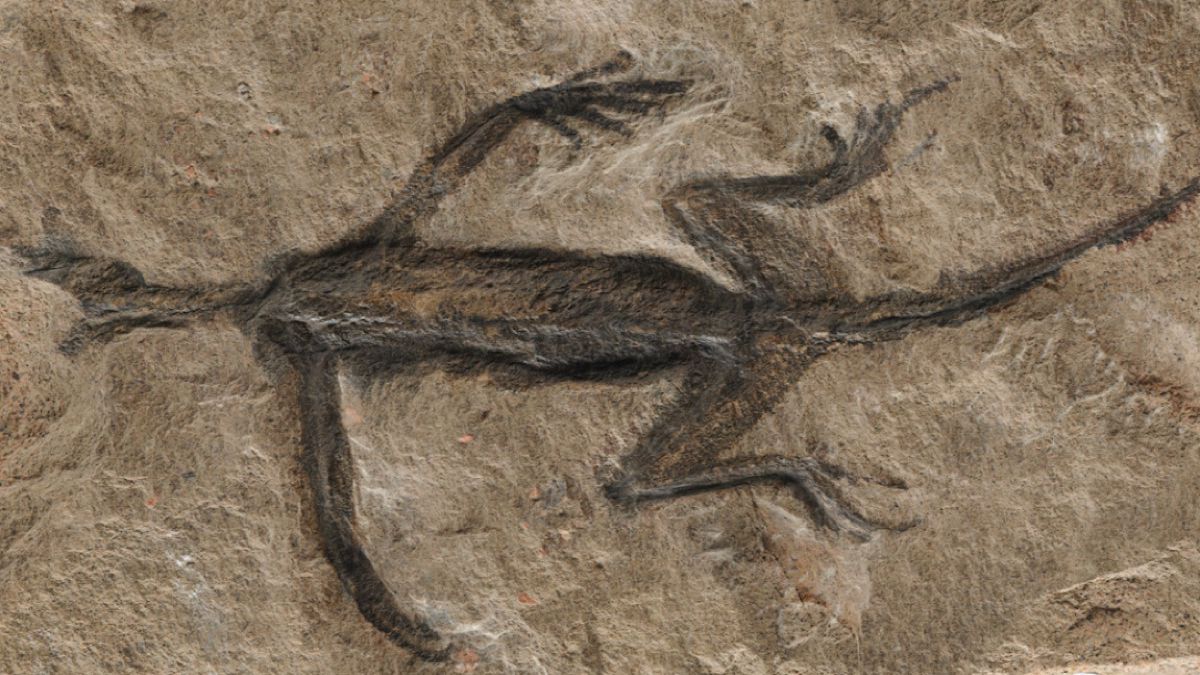A 280-million-year-old fossil of a lizard has intrigued science for nine decades. It was found in the Italian Alps and contained not only the bones of a strange five-toed species, but also its soft tissue, something extremely rare for preservation. But with the help of technology, paleontologists discovered something shocking: the fossil was a fake.
The unreal creature was reportedly found by Italian engineer and museum employee Gualtiero Adami, near the village of Beni. Small in size, with a long neck and five fingers on each limb, the animal's remains were transported to the local museum, where geologist Giorgio del Piaz identified it as a new genus and species – Tridentinosaurus anticus.
There was a dark color outlining the supposed lizard's body, thought to be charred skin or flesh, perhaps from a lava eruption. Fossilized plants with charred leaves and buds were also found in the area, which supports this belief.
Fossil hoax
This species was not fully described until 1959, and scientist Piero Leonardi placed it in the group ProtosuriaPointing out that it is important to understand the evolution of reptiles, as there were soft tissues preserved in the fossil. It would also be the oldest ever found in the Alps, at 280 million years old.
For preservation purposes, it took some time for modern techniques to be able to analyze the remains. The fossil has only been examined in depth using non-invasive techniques, such as photogrammetry, electron microscopy, precise X-ray diffraction, and spectroscopy.
The entire body glowed with fluorescence when exposed to ultraviolet light, which did not happen with the fossilized plants from the same region that were also studied, and is a type of glow that occurs with paints, glue, varnishes and other types of artificial pigments. There was also no evidence of fossilized melanin, which is expected to be found in soft tissue.

To add insult to injury, the preserved soft tissue is often flattened and excised T. Antique It showed many topographical variations in the black contour area.
Everything points to a mechanical preparation, perhaps in a failed attempt to uncover more of the skeleton in the rock. One or more layers of paint were applied to the fossil, with the texture being the same as that used in historical paintings, i.e. carbon-based with some organic binding elements.
How did the hoax last so long?
One explanation lies in the way the fossils were treated in 1931. It was originally customary to treat fossils with paint and varnish, the only way to protect the remains from further deterioration, as well as sometimes being used to beautify the remains.
In the case of the fake fossil, the mechanical preparation caused most of the damage, giving the paint the illusionary appearance of some kind of lizard. Now, the validity of the identification of the species of the remains, which was based on their body measurements, is being called into question. Part of the fossil is indeed real, with some bones preserved, but it is difficult to determine which species it belongs to, because what remains is in poor condition.
Some practices are no longer accepted today, state the scholars responsible for the revelation, and it is therefore important to describe in detail the methods used to characterize preserved animals.
source: Paleontology

“Incurable thinker. Food aficionado. Subtly charming alcohol scholar. Pop culture advocate.”






More Stories
NASA Releases Selfie of Perseverance Rover Working on Mars
NVIDIA driver includes hidden Final Fantasy XVI profile
PlayStation Plus Extra and Premium saw a significant drop in players in July